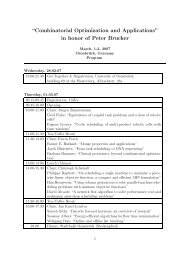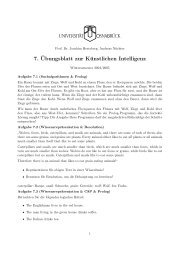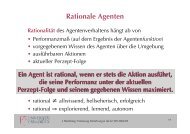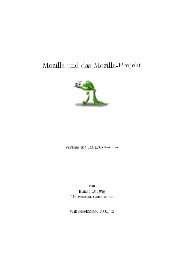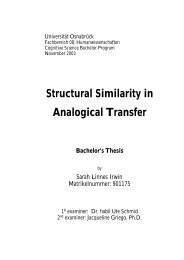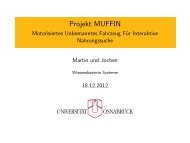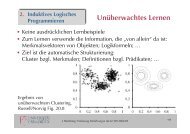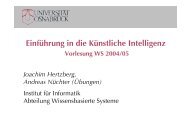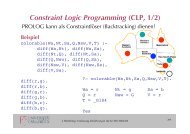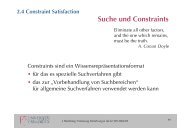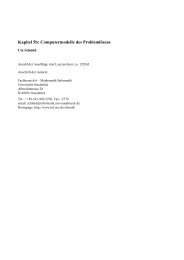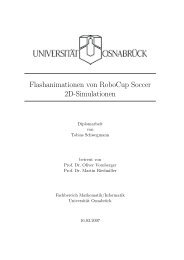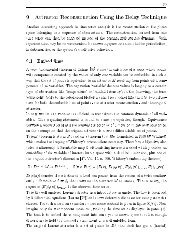Unsupervised Recursive Sequence Processing - Institute of ...
Unsupervised Recursive Sequence Processing - Institute of ...
Unsupervised Recursive Sequence Processing - Institute of ...
You also want an ePaper? Increase the reach of your titles
YUMPU automatically turns print PDFs into web optimized ePapers that Google loves.
5.2 Binary automata<br />
The second experiment is also inspired by Voegtlin. A discrete 0/1-sequence generated<br />
by a binary automaton with P (0|1) = 0.4 and P (1|0) = 0.3 shall be learned.<br />
For discrete data, the specialization <strong>of</strong> a neuron can be defined as the longest sequence<br />
that still leads to unambiguous winner selection. A high percentage <strong>of</strong> specialized<br />
neurons indicates that temporal context has been learned by the map. In<br />
addition, one can compare the distribution <strong>of</strong> specializations with the original distribution<br />
<strong>of</strong> strings as generated by the underlying probability. Figure 3 shows the<br />
specialization <strong>of</strong> a trained H-SOM-S. Training has been carried out with 3·10 6 presentations,<br />
increasing the context influence (1 − η) exponentially from 0 to 0.06.<br />
The remaining parameters have been chosen as in the first experiment. Finally, the<br />
receptive field has been computed by providing an additional number <strong>of</strong> 10 6 test<br />
iterations. Putting more emphasis on the context results in a smaller number <strong>of</strong> active<br />
neurons representing rather long strings that cover only a small part <strong>of</strong> the total<br />
input space. If a Euclidean lattice is used instead <strong>of</strong> a hyperbolic neighborhood,<br />
the resulting quantizers differ only slightly, which indicates that the representation<br />
<strong>of</strong> binary symbols and their contexts in the 2-dimensional output space representations<br />
does barely benefit from exponential branching. In the depicted run, 64 <strong>of</strong><br />
the neurons express a clear pr<strong>of</strong>ile, whereas the other neurons are located at sparse<br />
locations <strong>of</strong> the input data topology, between cluster boundaries, and thus do not<br />
win for the presented stimuli. The distribution corresponds nicely to the 100 most<br />
characteristic sequences <strong>of</strong> the probabilistic automaton as indicated by the graph.<br />
Unlike RecSOM (presented in [41]), also neurons at interior nodes <strong>of</strong> the tree are<br />
expressed for H-SOM-S. These nodes refer to transient states, which are represented<br />
by corresponding winners in the network. RecSOM, in contrast to SOM-S,<br />
does not rely on the winner index only, but it uses a more complex representation:<br />
since the transient states are spared, longer sequences can be expressed by<br />
RecSOM. In addition to the examination <strong>of</strong> neuron specialization, the whole map<br />
11<br />
10<br />
9<br />
8<br />
7<br />
6<br />
5<br />
4<br />
3<br />
2<br />
1<br />
0<br />
100 most likely sequences<br />
H-SOM-S, 100 neurons<br />
64 specialized neurons<br />
Fig. 3. Receptive fields <strong>of</strong> a H-SOM-S compared to the most probable sub-sequences <strong>of</strong> the<br />
binary automaton. Left hand branches denote 0, right is 1.<br />
20





